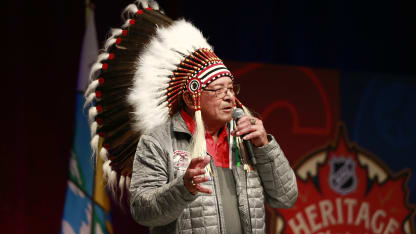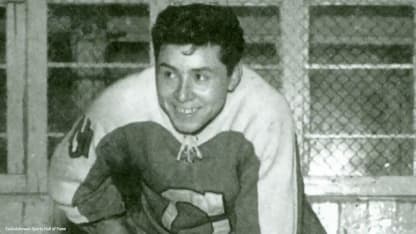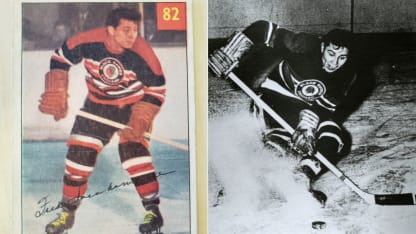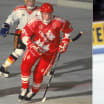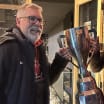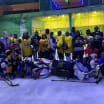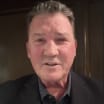Fred Sasakamoose, one of the first Indigenous players in the NHL, died Tuesday. The former Chicago Black Hawks forward was 86 and had been hospitalized with COVID-19.
Sasakamoose, who had lived on the Ahathkakoop Cree Nation reserve in Saskatchewan, was tested for COVID-19 on Nov. 19 and the test came back positive two days later, according to his son, Neil Sasakamoose.
He received antibiotics intravenously and was placed on oxygen, but his lungs could not recover, his son said.
"This COVID virus just did so much damage into his lungs, he just couldn't keep responding, his body just couldn't keep up," Neil said in a video posted on Facebook. "When I talked to him, I asked him how he was feeling, if he was scared. He said, 'I'm not scared, I'm ready to go, if I gotta go, I'm going to go.' I said, 'You know what, Dad? If you're tired, you go. You go and don't worry about us over here.'"
Sasakamoose did not have a point in 11 games with the Black Hawks in 1953-54.
"Only 125 hockey players and six teams, and I was one of them," he told Global News in 2018.
Family, friends and the hockey world mourned the loss of a man who overcame Canada's abusive residential school system to become the first Indigenous player with treaty status in the NHL.
"Fred Sasakamoose was a Canadian original who attained one of his life goals at the age of 19, by becoming the first Cree player to appear in an NHL game, and then dedicated the rest of his long life to serving the First Nations community -- using hockey and other sports to provide opportunities for Indigenous youth," NHL Commissioner Gary Bettman said. "The story of Sasakamoose's groundbreaking, 11-game NHL career with the Chicago Black Hawks in 1953-54 was the culmination of years of dedication to overcoming adversity in pursuit of a dream, and the pivot point at which he turned his focus to helping others pursue their dreams.
"On a personal note, I will always treasure meeting Fred at the 2019 Heritage Classic in his native Saskatchewan, getting to spend some precious time getting to know him and the gift he gave me that day -- a statue depicting his NHL rookie card. The National Hockey League mourns the passing of this special man and sends its condolences to his family and the countless young men and women of the First Nations community whose lives he touched."
